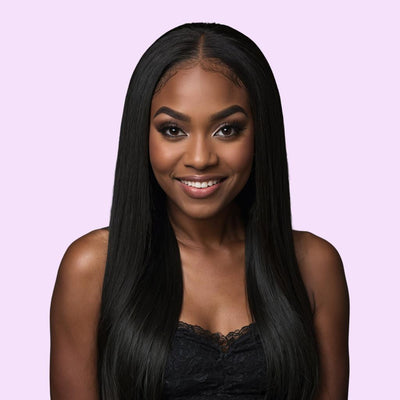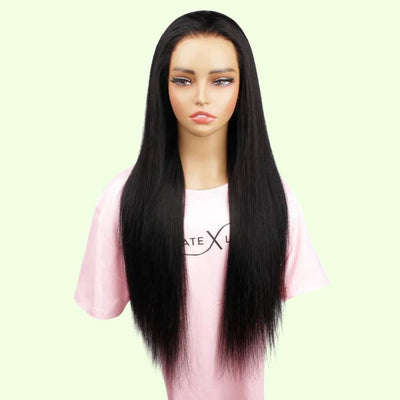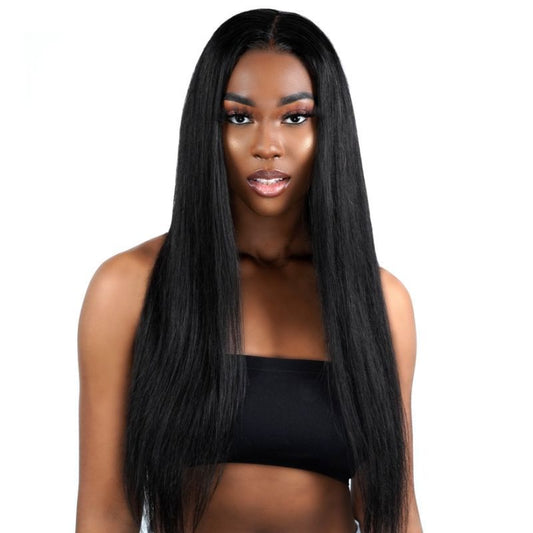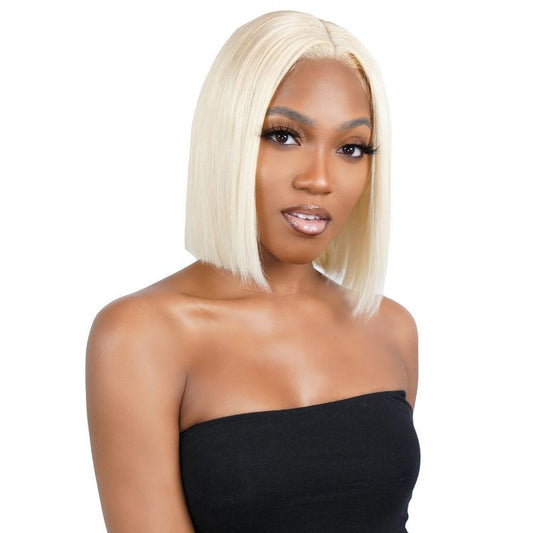1260 Memorial Drive
Atlanta, Georgia 30316
404-458-1330
The Amazing History of Wigs: Wigs Then and Now
Mikey MoranWigs, wigs wig! Within the past few years, wigs seem to be all the hype.
With high-profile celebrities like Beyonce and Kylie Jenner rocking wigs shamelessly, wigs have gained much popularity.
Wigs have developed substantially over the years.
Lace Front Wigs, 360 Frontals, and Full Lace Wigs allow you to switch it up while looking natural and beautiful.
Wigs aren’t anything new, so I started wondering what wigs were like back in the day.
How were iconic women like Tina Turner slaying wigs in the 50s and 60s?
And when did lace front wigs become popular?
I pulled out my Wigology Textbook (Google) and did some research.🤓
Here's what I came up with:

In the Beginning
Let's rewind to BC days. Egyptians made the earliest known wigs with human hair, palm leaf fibers, or even wool.
These wigs signified rank, statues, religious piety, and also protected their heads from the sun and bugs.
Over in Europe, women typically used their hair as a foundation for headdresses.
It wasn’t until the end of the 15th century that hairstyles became more intricate, including false hairpieces.
Hair was even powdered and gummed, but a full head wig wasn’t very popular.
Perruque, peruke, periwyk, periwig, were the olden terms for the wig.

European Wigs
At this point, wigmakers make custom wigs by hand which is very expensive.
Wigs were a big part of the then modern culture for women and men.
Typically, used to express fashion sense in the seventeenth century.
Wigs were so popular that those that weren’t able to afford a wig would style their natural hair in a way to make it look as wig-like as possible.
In the mid-eighteenth century, white was all the rave in wigs.
At the time, wig makers greased and powdered wigs with flour or starch to create the white color.
Elaborated with jewels and trinkets these wigs were quite fancy.

1920s
Fast forward to the 20th century; wigs were out of style by the 1920s.
The bob hairstyles became very popular, and women preferred wearing their natural hair.
Older women were still holding on to their wigs, but the younger generation progressed on to other hairstyling practices.
It wasn't until the 1950s that wigs made a comeback.

Wigs in the Black Community
Wigs became a favorite style in the African-American community because they enable African-American women to style their hair without the trouble of heat-styling.
Chemical relaxers and heat-styling were the only ways to straighten kinky curly hair at the time, and the process was often long and painful.
Straight wigs allow African-American women to achieve different styles with ease and also conform to Eurocentric beauty standards.
White women continue to wear wigs during this period for convenience.

Wigs in the Music Industry
In the 70s, iconic entertainers such as Tina Turner and Diana Ross wore beautiful wigs during every show.
Check them out!

This beautiful bob style with bangs complimented Ms. Turner’s features perfectly.
Bob wigs were a popular style in the 70s.

This wig is also very natural-looking, with the bangs cut perfectly.
Tina Turner rocked this long silky wig before she introduced us to her big, blonde wig.
Fun fact: Tina Turner made all of her wigs by hand and you can make a wig too!

Wigs fell out of fashion once again in the 90s as the rise of pixie cuts and braids became popular.
African American women experimented with many cuts and color in the 90s, often wearing their hair straight.
Modern Day Wigs
Wigs resurfaced and became more popular than ever in the mid-2000s with the popularity of the lace front wig.
The lace front wig introduced a natural-looking alternative to the traditional wigs and allowed women to switch up hairstyles without looking unnatural.
Zendaya is a celebrity who is known for wig switch-ups. She goes between long, short, curly, straight hairstyles and even switches up her color.
These are some of my favorite wigs looks from Zendaya Coleman.
Zendaya looks beautiful in these big sexy curls!

Zendaya had her fans in shock with this pixie cut wig! Many thought she cut her natural hair because she rocks this wig so naturally!
The short look is one of my favorite wigs looks from Zendaya.
The bob and the bangs remind me of legend Tina Turner, with a sleek, sophisticated finish.

Modern Day Wigs
Modern wigs are much more natural and versatile compared to earlier European wigs.
Most wigmakers reside in Asia and create and weft wigs with a machine.
However, custom wigs are also very popular in America.
Like our made to order wigs!
Custom wigs allow a customer to have a stylist create a wig to fit the exact dimensions of the client's head.
Custom and machine weft wigs can also come in various curl patterns.

Lace Frontal Wigs
360 frontal wigs and Full lace wigs are the newest wigs right now.
A 360 frontal wig has lace around the entire perimeter of the head, allowing you to pull the hair up into a ponytail and have many more parting options.
Full lace wigs are wigs constructed of lace throughout the entire wig.
There are no tracks in this unit at all.
This type of wig allows for maximum versatility and unlimited parting.

U-Part Wigs
Another famous modern wig is called the U-Part Wig and the latest V-Part Wigs!
Wig makes create this type of wig with a horseshoe-shaped gap on the top of the wearer’s hair to lay over the wig.
The "u-part" creates a natural look and makes the wearer feel like they’re wearing their hair.
Wigs have evolved tremendously.
No longer are we making wigs with palm leaves and wool, and no longer are we plastering cornstarch on our heads to create white hair.
Nowadays, you can feel comfortable wearing a beautiful, natural-looking wig.
Of course, I couldn’t finish off this article without showing off some of mine.😎
I hope this article gives you some insight into your wig history!

























2 comments
This article on the history of wigs is fascinating! It’s incredible to see how wigs have evolved over centuries, from ancient Egypt to modern-day styles like lace front wigs and U-part wigs. The cultural significance and evolution of wigs, especially in the context of fashion and convenience, are truly eye-opening.
Such a fascinating journey through wig history! It’s incredible how wigs evolved from ancient Egyptian times to becoming a fashion statement today. I love seeing how wigs have adapted over the centuries, especially in the music industry and beyond.